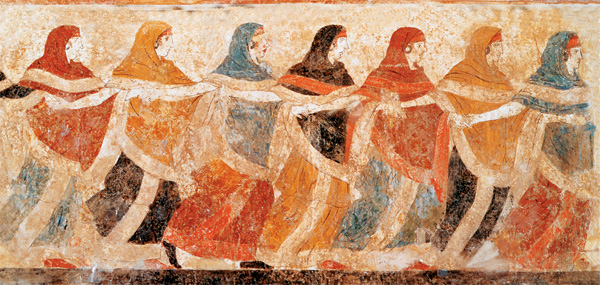Image Details

Scala/Art Resource, NY
Women join hands to perform a haunting funerary dance in a fourth-century B.C.E. painting from a tomb in the town of Ruvo, in southeastern Italy. Although the painting is the work of an Italic people called the Peucetians, it betrays the influence, in theme and style, of the Etruscans, who inhabited central Italy beginning around the eighth century B.C.E.
Etruscan women enjoyed a degree of freedom unheard of in the Greek and Roman worlds. They sang, they danced, they dined with men—and, if certain ancient authors are to be believed, they were sexually loose.
